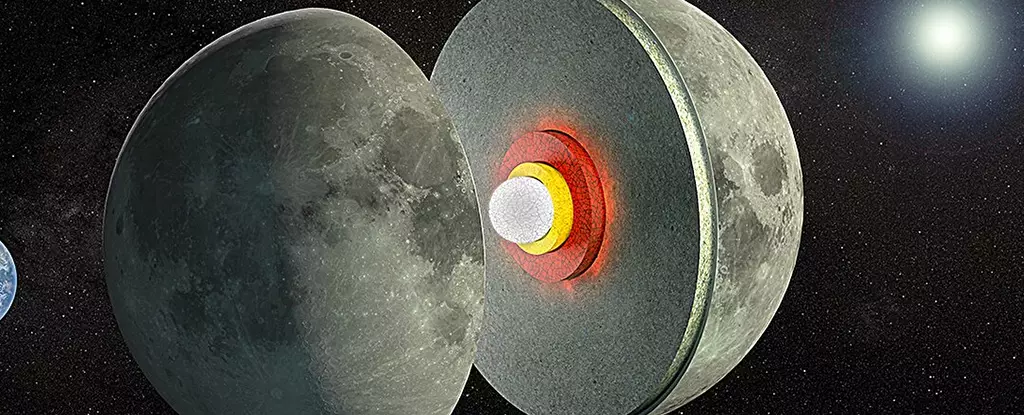The Moon, Earth’s celestial neighbor, has long been a focus of scientific inquiry, revealing secrets about our solar system. Recent research conducted by a team from NASA Goddard Space Flight Center and the University of Arizona has added a compelling layer of complexity to our understanding of the Moon’s internal structure. This study, fueled by innovative technology and lunar data, proposes the existence of a partially-molten layer that exists between the Moon’s rocky mantle and its solid metal core, challenging previous assumptions regarding the Moon’s composition and behavior.
Astrophysics has demonstrated a profound connection between celestial bodies through gravitational interactions. The Moon, for instance, experiences tidal effects not just in the form of ocean movements on Earth but also through physical deformations that affect its shape and gravitational field. This research is pivotal because it transforms our understanding of how the Moon’s structure responds to Earth’s gravitational pull, calling into question previous conceptions that it might be entirely solid below its surface.
For this particular study, the researchers harnessed advanced data collected from NASA’s Gravity Recovery and Interior Laboratory (GRAIL) and the Lunar Reconnaissance Orbiter. These instruments provided detailed measurements of the Moon’s gravitational field, enabling researchers to observe lunar “tides.” This new data allowed for precise estimates of the Moon’s deformation on an annual basis, shedding light on its internal dynamics.
The central hypothesis of the study posits a low-viscosity zone (LVZ) resting at the base of the lunar mantle. For the researchers, computer models suggested that the mantle’s composition needed to include this viscous layer for the data to make sense. Until now, the presence of such a layer was merely theoretical and debated among scientists, but this study has shifted that paradigm.
The LVZ challenges notions that the Moon’s mantle is homogeneously solid, suggesting instead that it contains a gooey area that not only rises and falls but also likely influences the Moon’s thermal state. The researchers speculate that this layer may be enriched with the mineral ilmenite, which has implications similar to findings in Mars’ geology, where seismic analysis pointed toward a molten layer beneath the surface.
The implications of discovering a partially-molten layer beneath the Moon’s surface extend beyond mere geological curiosity. If confirmed, this finding could influence future lunar exploration missions and the potential establishment of a permanent human presence on the Moon. Seismic readings taken directly from lunar bases could provide invaluable data, helping scientists better understand the Moon’s evolution and thermal dynamics.
Moreover, understanding the composition and behavior of lunar materials can also inform decisions regarding resource utilization for future space exploration. As humanity contemplates the prospect of colonizing our satellite and utilizing its resources, this research serves as a foundation for understanding the Moon not just as a barren landscape, but as a complex and dynamic system.
Overall, this study highlights the intricate nature of planetary science—an intersection of geology, astrophysics, and engineering. The findings about the Moon’s interior structure are exciting, not just because they potentially redefine our understanding of Earth’s natural satellite but also because they pave the way for future discussions around lunar habitation and exploration.
As technology advances and our methods of investigating celestial bodies become increasingly sophisticated, it’s essential to approach these discoveries with a mindset of unabated curiosity. Each new layer of understanding we peel back regarding the Moon will undoubtedly enhance our comprehension of not only our solar system but also the possible existence of similar structures on other celestial bodies. The journey into the Moon’s interior, it seems, has only just begun.


Leave a Reply